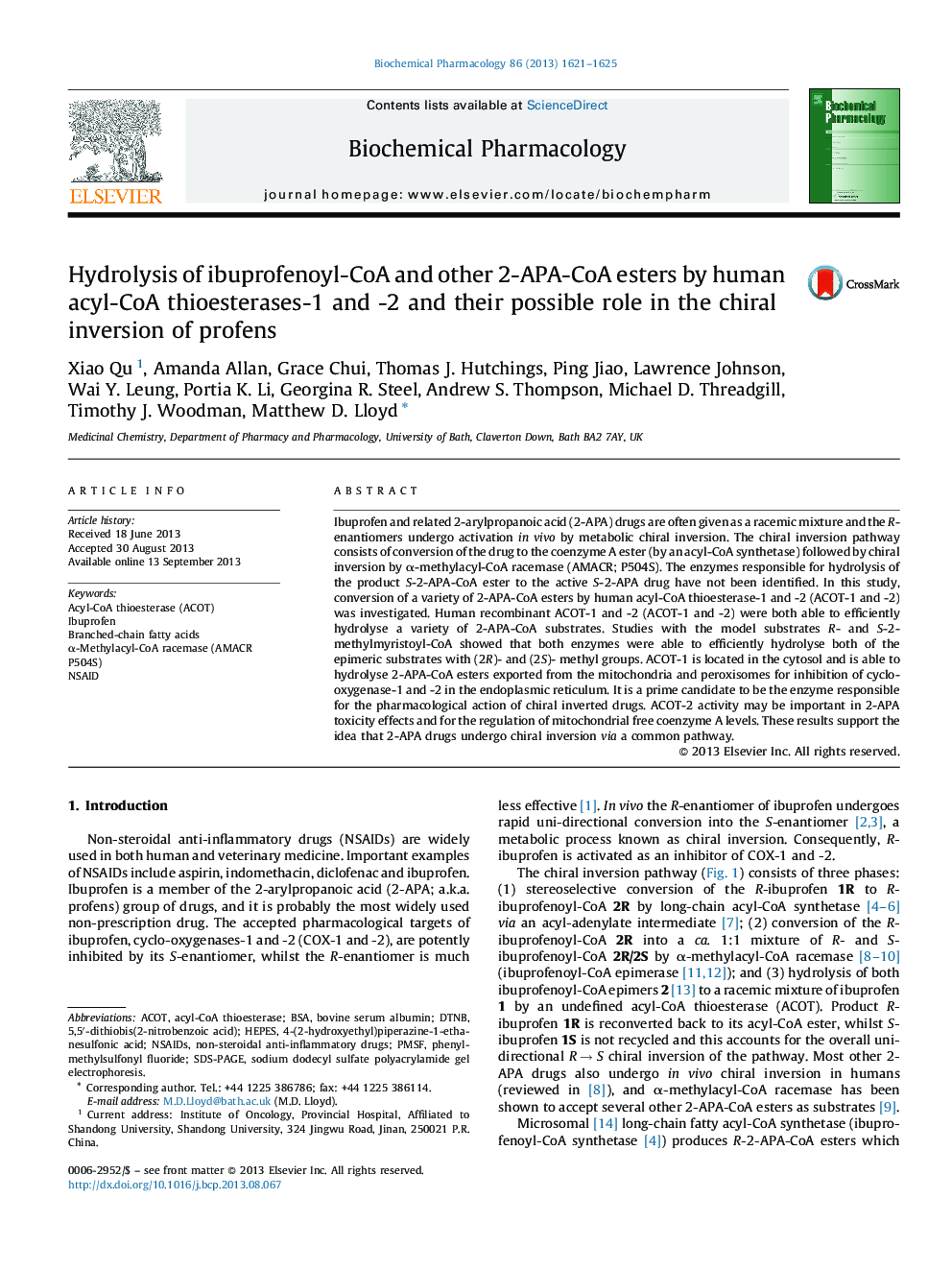| Article ID | Journal | Published Year | Pages | File Type |
|---|---|---|---|---|
| 2512456 | Biochemical Pharmacology | 2013 | 5 Pages |
Ibuprofen and related 2-arylpropanoic acid (2-APA) drugs are often given as a racemic mixture and the R-enantiomers undergo activation in vivo by metabolic chiral inversion. The chiral inversion pathway consists of conversion of the drug to the coenzyme A ester (by an acyl-CoA synthetase) followed by chiral inversion by α-methylacyl-CoA racemase (AMACR; P504S). The enzymes responsible for hydrolysis of the product S-2-APA-CoA ester to the active S-2-APA drug have not been identified. In this study, conversion of a variety of 2-APA-CoA esters by human acyl-CoA thioesterase-1 and -2 (ACOT-1 and -2) was investigated. Human recombinant ACOT-1 and -2 (ACOT-1 and -2) were both able to efficiently hydrolyse a variety of 2-APA-CoA substrates. Studies with the model substrates R- and S-2-methylmyristoyl-CoA showed that both enzymes were able to efficiently hydrolyse both of the epimeric substrates with (2R)- and (2S)- methyl groups. ACOT-1 is located in the cytosol and is able to hydrolyse 2-APA-CoA esters exported from the mitochondria and peroxisomes for inhibition of cyclo-oxygenase-1 and -2 in the endoplasmic reticulum. It is a prime candidate to be the enzyme responsible for the pharmacological action of chiral inverted drugs. ACOT-2 activity may be important in 2-APA toxicity effects and for the regulation of mitochondrial free coenzyme A levels. These results support the idea that 2-APA drugs undergo chiral inversion via a common pathway.
Graphical abstractAcyl-CoA thioesterase-1 and -2 catalyse hydrolysis of 2-APA-CoA esters. The results suggest ACOT-1 plays a key role in the chiral inversion of ibuprofen and other 2-APA drugs.Figure optionsDownload full-size imageDownload as PowerPoint slide
